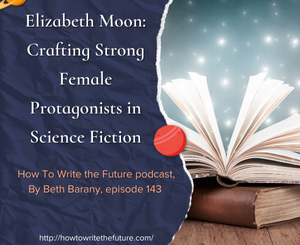6 Elements of Successful Storytelling by Kay Keppler
 Let’s welcome back monthly columnist Kay Keppler as she shares with us “6 Elements of Successful Storytelling.” Enjoy!
Let’s welcome back monthly columnist Kay Keppler as she shares with us “6 Elements of Successful Storytelling.” Enjoy!
***
A publisher recently sent me a review of a published book that I’d edited for them. The review praised several specifics that I had fought for over two revision cycles. To me, the need for the changes had seemed obvious—but they came as a surprise to the author. In fact, the last several manuscripts I’ve worked on have had significant structural issues—nothing that couldn’t be repaired, but expensive in terms of time and effort, especially since some problems came up early and affected events throughout the book.
Before you go too far—perhaps before you write one word—think through what your book needs to have. I’m not talking about genre conventions, I mean the structural elements that keep readers turning the page, whatever kind of book you write.
1. The Right Beginning
Start your story at the moment of change—or even later. When life shifts, breaks, improves, or alters for your protagonist. In that moment, your protagonist is challenged to respond. And that’s the beginning of the story. Don’t start with context, because nobody cares. Don’t start with a prologue, with backstory, because that’s back. Start with now. What’s important now? Throw your readers into action.
2. Urgency
Urgency adds not just drama, but reasons, for the actions your characters take. Why is this story happening now? Your protagonist’s boss has absconded with the secret formula. The virus was set loose over Manhattan. The enemy is on the horizon. When characters face urgent issues, they are tested. And in that testing, character is revealed.
3. Tension or Conflict
Whether you write cozy mysteries, Regency romances, or spine-tingling apocalyptic thrillers, readers need to know from page one that the stakes are serious. What does your protagonist want? Make her goal a tough one. What is her motivation? What keeps her from achieving it? Make it real. Make it count. Make the stakes high. Keep the consequences terrible.
4. Characters with Agency
I’ve seen it: sometimes characters just sit around and act wise while events happen around them. Or they sit around until somebody calls and invites them to change their lives. Your protagonists should go out and do things, make decisions and act on them, and be the agents of change.
5. Complexity
Make your characters work to achieve their goals. Make them struggle. Put obstacles in their way. And when they achieve success—show how reaching that interim goal just made things worse. Put them back into square one.
6. Complexity again
Your story isn’t just a sequence of actions. It should also have meaning, a theme, that you can tweak out with metaphors and motifs. Dig deeper. Find the buried subtext and reveal it.
If you haven’t incorporated these six elements into your book from the beginning, it’s never too late. Write the discovery draft as it comes to you. When it’s time for revising, get off to a good start, and then make sure you’ve written with complexity, urgency, conflict, and agency in mind.
***
ABOUT THE AUTHOR
KayKeppler is an author Zero Gravity Outcasts, Betting on Hope, Gargoyle: Three Enchanting Romance Novellas, and editor of fiction and nonfiction –Angel’s Kiss and Outsource It! She lives in northern California. Contact her here at Writer’s Fun Zone in the comments below, or at kaykeppler@yahoo.com to ask questions, suggest topics, or if you prefer, complain.
is an author Zero Gravity Outcasts, Betting on Hope, Gargoyle: Three Enchanting Romance Novellas, and editor of fiction and nonfiction –Angel’s Kiss and Outsource It! She lives in northern California. Contact her here at Writer’s Fun Zone in the comments below, or at kaykeppler@yahoo.com to ask questions, suggest topics, or if you prefer, complain.






